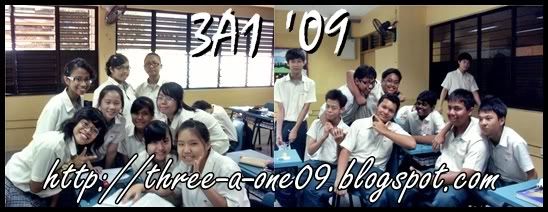
Tuesday, September 15, 2009
Reflection and Refraction of Light


Dear students,
To clarify some of your doubts today during the extra lesson regarding the reflection and refraction of light:
Go to this website:
http://www.walter-fendt.de/ph14e/refraction.htm
Notice that the ray of light undergoes both reflection and refraction when the light enters the glass block. Hence, there will be two rays: A reflected ray, with the angle of reflection = to the angle of incidence and a refracted ray, the angle of refraction can be calculated by the formula
n = (sin i)/(sin r).
Note that the textbook does not show a reflected ray when the ray of light passes from air into the glass block. It only shows the refracted ray. However in reality, a reflected ray is also present.
You can vary the angle of incidence of the reflected ray by dragging it with your mouse. Notice how the angle of reflection and angle of refraction changes.
Total Internal Reflection
Go to this website and click on the "view online(free)" button.
http://www.absorblearning.com/media/item.action?quick=15o
You should see this window:
Adjust the torch light to adjust the angle of incidence. Notice that the incident ray also gets reflected and the reflected ray has the same angle of reflection as the incident ray.
Part of the ray is reflected while part of it is refracted, which leaves the glass block. The reflected ray is very weak (shown by the light-colour of the ray).
As you increase the angle of incidence, the angle of refraction also increases. ( I explained this in class this afternoon).
Once the angle of incidence increase to 41.9 degrees, total internal reflection occurs. This means that the ray is ENTIRELY reflected, hence the term "total".
The angle of incidence at which the angle of refraction is 90 degrees is called the Critical Angle.
Continue to increase the angle of incidence. Note that the total internal reflected ray will have the same angle of reflection as the angle of incidence.
Play around with these 2 simulations to find out more. If in doubt, please ask.
Regards,
Mr. Goh
Tuesday, September 8, 2009
14 September and Reminders from Mr. Goh
Dear 3A1 peeps,
Extra Lesson
Regarding the extra lesson scheduled on 14 September 09 (Monday), regret to inform all of you that the school has a rehearsal at 2.30 pm that afternoon for the Video Games Competition to be held on 16 Sept.
Being involved in the rehearsal, I would not be able to conduct the extra lesson on 14 Sept.
My apologies.
However, I will be able to have the session on Tuesday (15 Sept).
Thermometers
Please remember and remind each other to bring the ODTs for the first day of school.
Report book
Please ask your parents/guardian to acknowledge(sign) on your progress report.
Bring the report book back to school on 14 September 09.
Have a good week ahead.